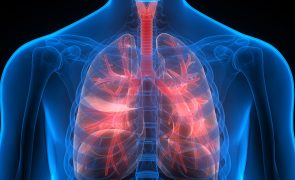
 gb GENETIC A1AT
gb GENETIC A1AT
Kit slouží k detekci mutací PI*S a PI*Z v genu pro alfa-1-antitrypsin v lidské genomové DNA. Kit je založen na realtime PCR s využitím fluorescenčně značených sond (alelická diskriminace).

Dihydropyrimidine dehydrogenase (DPD; coded by the DPYD gene) is an initial and rate-limiting enzyme of uracil catabolism, consequently essential for elimination of fluoropyrimidine-based chemotherapeutics (fluorouracil, capecitabine, tegafur, flucytosine). In many patients (up to 9%), activity of DPD is decreased or even lacking due to genetic variants of the DPYD gene (more than 160 described to date), leading to a build-up of a drug in the patient‘s body and to a risk of serious toxic effects.
For phenotypic testing, the measurement of pre-therapeutic blood levels of the endogenous DPD substrate uracil can be used. Higher pre-treatment uracil concentrations are associated with an increased risk of toxicity and correlate with known DPYD variants responsible for lower or no enzymatic activity (Meulendijks et al., 2017). A plasma uracil level ≥ 16 ng/ml is indicative for partial DPD deficiency associated with a risk of fluoropyrimidine toxicity. Concentration ≥ 150 ng/ml signals complete DPD deficiency with a risk for life-threatening side effects. However, the proposed cut-offs (particularly ≥ 16 ng/ml), preanalytical (proper handling of specimens) and analytical concerns are still under discussion as well as a promising combination of phenotypic and genotypic approaches.
In the case of genotypic testing, the crucial step is to recognize the most relevant DPYD variants. In Caucasian patients, there are four most common DPYD variants causing complete absence (c.1905+1G>A; DPYD*2A and c.1679T>G;DPYD*13) or reduction (c.2846A>T and c.1236G>A/HapB3) of DPD enzymatic activity. Interestingly, the above mentioned variants are considered to be virtually absent in patients of African or Asian origin.
Testing using the methods of molecular biology, particularly PCR, provides precise information about a patient‘s genotype. Genotyping is easy to implement in clinical and laboratory practice, mainly due to fewer logistic requirements for both patients and laboratories. In contrast to phenotypic testing, genotyping is not prone to variation within and between laboratories and gives consistent outcomes which can be used by many medical specialists in different contexts (the concept of a pharmacogenetic-passport, van der Wouden et al., 2019). On the other hand, rare/unknown relevant DPYD variants may be missed by exactly targeted molecular assays. This problem can be overcome by a rigorous assay design taking into consideration the ethnic differences, technological progress and new scientific findings.
European Medicines Agency. Fluorouracil and fluorouracil related substances Article 31 referral – EMA recommendations on DPD testing prior to treatment with fluorouracil, capecitabine, tegafur and flucytosine; EMA/367286/2020
Meulendijks D, Henricks LM, Jacobs BAW, et al. Pretreatment serum uracil concentration as a predictor of severe and fatal fluoropyrimidine-associated toxicity. Br J Cancer. 2017;116(11):1415-1424. doi:10.1038/bjc.2017.94
van der Wouden CH, van Rhenen MH, Jama WOM, et al. Development of the PGx-Passport: A Panel of Actionable Germline Genetic Variants for Pre-Emptive Pharmacogenetic Testing. Clin Pharmacol Ther. 2019;106(4):866-873. doi:10.1002/cpt.1489
Published by: Milan Blaha
August 2020
Požadavek byl úspěšně odeslán
Požadavek byl úspěšně odeslán
Thank you for your interest in our testing services. We will reply to your e-mail address as soon as possible.
Děkujeme za vaši poptávku
Děkujeme za vaši poptávku
Vaše registrace byla odeslána.
Děkujeme za vaši poptávku